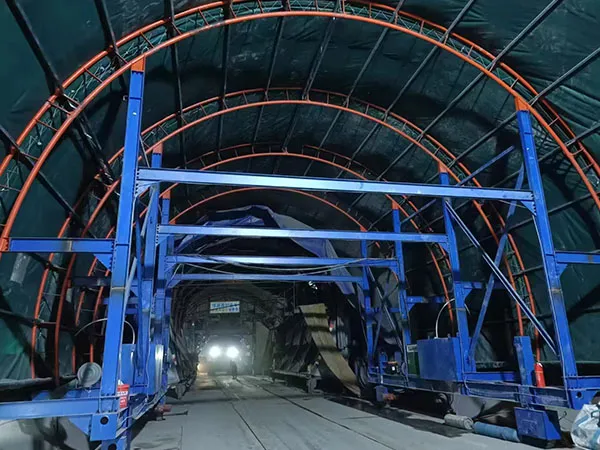Graphite rack play a crucial role in vacuum furnaces, serving as stable supports for workpiecesduring high-temperature heat treatment processes. Due to their excellent thermal stability, chemicaresistance, and mechanical strength, graphite components are widely applied in aerospace,metallurgy, electronics, and new material industries. However, under long-term service conditionsinvolving extreme temperatures, vacuum environments, and repeated thermal cycing, graphitebrackets are prone to deformation.
Deformation of graphite rack not only affects the accuracy of workpiece positioning but alsoshortens equipment life and increases maintenance costs. The causes are often related to thermastress, material quality, improper loading, and operational factors. Understanding these causes isessential for improving furnace reliability and ensuring product quality.
Causes and Prevention of Deformation of Vacuum Furnace Graphite Rack

Thermal Stress and Expansion:
Description: Graphite expands when heated and contracts when cooled. In a vacuum furnace, rapid heating and cooling cycles, or uneven heating, can create significant thermal stresses within the graphite. If different parts of the bracket heat or cool at different rates, they will expand or contract unevenly, leading to warpage and deformation.
Prevention:
Controlled Heating/Cooling Rates: Implement slow and controlled heating and cooling ramps in the furnace program. Avoid abrupt temperature changes, especially during the critical phases.
Uniform Heating: Ensure the furnace design provides uniform heating throughout the hot zone where the graphite brackets are located. Optimize element placement and insulation.
Material Selection: Use isotropic graphite grades, which have similar thermal expansion coefficients in all directions, reducing internal stresses during temperature changes.
Creep:
Description: At very high temperatures (typically above 2000°C for graphite), materials can slowly deform under constant mechanical stress, even if the stress is below the material’s yield strength. This phenomenon is known as creep. The weight of the parts being held by the bracket, combined with the high temperature, can cause the graphite to sag over time.
Prevention:
Design for Load Distribution: Design the brackets to distribute the load as evenly as possible and minimize stress concentrations. Use thicker sections or reinforce areas under high stress.
Intermittent Use or Rotation: If possible, rotate the brackets or use them intermittently to allow for stress relaxation and prevent continuous creep in one direction.
High-Strength Graphite: Utilize high-density, high-strength graphite grades specifically designed for high-temperature applications, which exhibit better creep resistance.
Oxidation/Corrosion (if not perfect vacuum):
Description: While vacuum furnaces aim for a perfect vacuum, residual gases (like oxygen or water vapor) can still be present, especially if there are leaks or if materials outgas. Graphite reacts with oxygen at high temperatures, forming carbon monoxide or carbon dioxide, leading to material loss and weakening of the structure. This can cause localized thinning and subsequent deformation under load.
Prevention:
Maintain High Vacuum: Ensure the furnace system is leak-tight and maintain the best possible vacuum level.
Proper Bake-out: Thoroughly bake out the furnace chamber and any new materials to remove adsorbed gases and moisture.
Inert Gas Backfill: For critical applications, consider backfilling with high-purity inert gas (e.g., argon) during cooling, especially at temperatures where oxidation is a concern.
…
For more detailed information about the causes and solutions of vacuum furnace graphite frame deformation, please click here: https://www.czgraphite.com/a/news/causes-and-prevention-of-deformation-of-vacuum-furnace-graphite-rack.html











